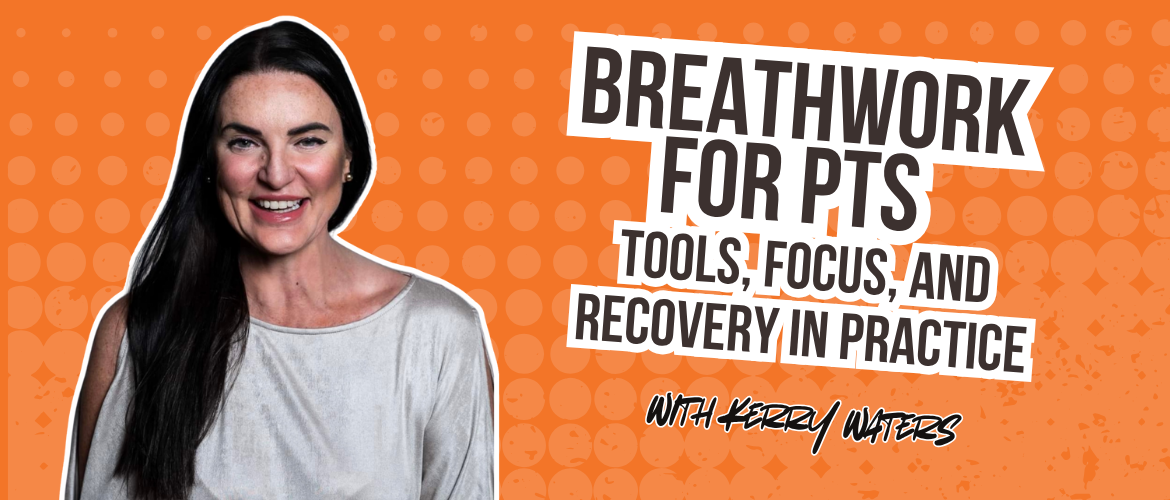GET IN TOUCH TODAY!
"*" indicates required fields

In Part 1 of our conversation with breathwork and cold therapy coach Kerry Waters, we explored how elite athletes are now using conscious breathing techniques to improve performance and recovery.
But what about personal trainers and coaches? How can we start using breathwork in practice – and what do we need to be aware of?
Here’s what Kerry shared in Part 2 of our conversation.
Kerry’s answer: Yes – but with training and responsibility.
“If you’re going to use breathwork techniques for performance – like breath holds, CO₂ tolerance, or hyperventilation methods – you need to get trained. You’re manipulating the nervous system.”
She compares it to screening your client before a new programme. You wouldn’t start someone on box jumps if they had a knee injury. The same applies here – breathwork needs proper context and screening.
Kerry guided me (and our audience) through a brilliant intro technique that PTs can safely use with most clients:
Breathe in for 4 seconds, hold for 2, exhale slowly for 8.
It’s called 4–2–8 breathing, and it’s perfect for:
Settling nerves pre-session
Switching off post-workout
Starting a cold shower or plunge
Managing stress or anxiety
“If a client comes in frazzled from their commute or work stress, two minutes of this will completely change their state,” she said.
PTs can start applying nasal breathing cues and gentle breathwork drills safely, especially during:
Warm-ups and cooldowns
Light aerobic sessions
Recovery blocks
But anything involving CO₂ tolerance, long breath holds, or hyperventilation (like Wim Hof) should be approached cautiously – and only with proper training.
Kerry also made it clear that certain clients should avoid deep breathwork altogether, including those with:
Neurological conditions (e.g. epilepsy)
Heart problems or stroke history
Respiratory disease or uncontrolled asthma
We also talked about cold exposure – something more and more clients are curious about. Kerry explained how to introduce this safely:
Start with 30 seconds of cold water at the end of a hot shower
Use 4–2–8 breathing before and during
Never combine cold plunges with deep breathwork
Always be guided by someone properly trained and insured
“It’s not about bravado,” she said. “It’s about guiding the nervous system safely.”
She also shared how the dopamine release from cold showers can be hugely helpful for people with ADHD, addiction issues, or dopamine-seeking behaviours. “It gives you a natural buzz,” she said. “That feel-good hit, but without the crash.”
Breathwork isn’t just trendy. It’s evidence-based, powerful, and surprisingly accessible – but like any tool, it must be applied with care.
Here’s how Kerry suggests PTs get started:
Use 4–2–8 breathing with clients to reduce stress and improve focus
Educate yourself before using performance breathwork methods
Screen clients like you would for any other training intervention
Explore cold exposure gradually and with proper support
“It’s your breath. It’s free. And once you learn to use it properly, it can change everything.”
You can follow Kerry and explore her work via:
Instagram: **@kerrywaters
Website: kerrywaters.com
If you’re passionate about fitness and want to help people feel and perform better — physically and mentally — then it’s time to qualify as a Personal Trainer.
Fill in the contact form and we’ll help you take the first step.
"*" indicates required fields